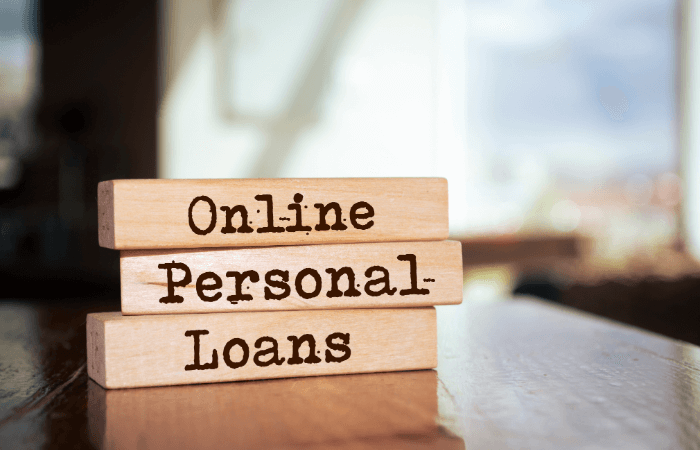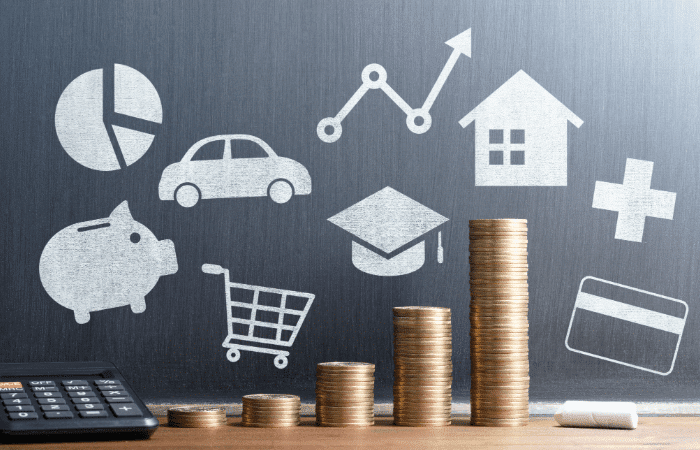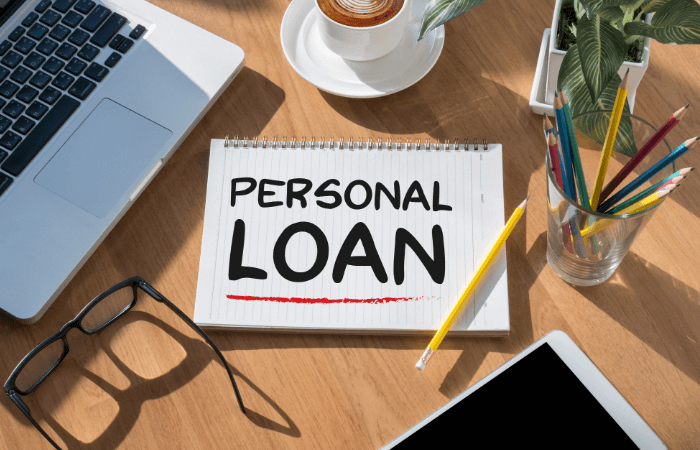Your Guide to Unsecured Financing Options
The personal loan market has experienced tremendous growth, with over $177 billion in outstanding personal loan debt as of 2021. This surge reflects the increasing popularity of personal loans as a flexible financing solution for everything from debt consolidation to home improvements and unexpected expenses.
A personal loan provides borrowers with a lump sum of money that’s repaid over time through fixed monthly payments. Unlike credit cards or other revolving credit options, personal loans offer predictable payment schedules and often more favorable interest rates for qualified borrowers. Whether you’re considering consolidating high-interest debt or funding a major purchase, understanding how personal loans work can help you make an informed financial decision.
In recent years, many lenders have expanded their loan options to include personal loans online, making it easier than ever to apply online for financing. This convenience has also led to the growth of online loans for bad credit and quick loans for bad credit, providing opportunities for borrowers with less-than-perfect credit history to access funds through unsecured loans with a fixed rate.
What Are Personal Loans?
A personal loan is an unsecured installment loan that provides borrowers with a fixed amount of money upfront, which is then repaid over a predetermined period through regular monthly payments. Unlike secured loans such as auto loans or mortgages, personal loans typically don’t require collateral, making them accessible to a broader range of borrowers.
Personal loans offer several key characteristics that distinguish them from other financing options:
- Loan amounts typically range from $1,000 to $60,000, though some lenders may offer minimum loan amounts as low as $500 or maximum amounts up to $100,000 for highly qualified borrowers. The actual loan amount you qualify for depends on factors like your credit score, income, and debt to income ratio.
- Fixed interest rates are standard with most personal loans, meaning your interest rate remains constant throughout the repayment term. This differs from credit cards, which often have variable rates that can fluctuate with market conditions.
- Repayment terms generally span 24 to 84 months, giving borrowers flexibility to choose a loan term that fits their budget. Shorter terms result in higher monthly payments but less total interest paid, while longer terms reduce monthly payments but increase the total cost of borrowing.
Since personal loans are unsecured loans, the loan approval and loan terms are primarily based on your creditworthiness rather than collateral. This means lenders evaluate your credit history, current income, and existing debt obligations to determine whether to approve your application and what interest rate to offer.
Personal Loan Amounts and Interest Rates
Understanding the cost structure of personal loans is crucial for making an informed borrowing decision. Current APR ranges typically fall between 6.99% and 35.99%, with your specific rate determined by several factors including your credit score, income stability, and overall financial profile.
Interest Rate Factors
Your credit score plays the most significant role in determining your interest rate. Here’s how different credit score ranges typically affect personal loan rates:
| Credit Score Range | Typical APR Range | Monthly Payment (on $15,000, 5-year loan) |
| 720+ (Excellent credit) | 6.99% – 12.99% | $297 – $326 |
| 680-719 (Good) | 13.00% – 19.99% | $327 – $374 |
| 640-679 (Fair) | 20.00% – 27.99% | $375 – $429 |
| Below 640 (Poor) | 28.00% – 35.99% | $430 – $487 |
Beyond credit scores, lenders consider your debt to income ratio, which compares your monthly debt payments to your monthly income. Most lenders prefer a DTI below 40%, though some may accept higher ratios for borrowers with excellent credit.
Additional Costs
Many lenders charge an origination fee, typically ranging from 1% to 8% of the loan amount. This fee is usually deducted from your loan proceeds, meaning you receive less than the full loan amount while still being responsible for repaying the entire sum. Some lenders also impose prepayment penalties if you pay off your loan early, though many online personal loans don’t include these fees.
When comparing loan offers, always focus on the APR rather than just the interest rate, as the APR includes both the interest rate and most fees, giving you a more accurate picture of the total cost of borrowing.

How to Apply for a Personal Loan
The application process for personal loans has become increasingly streamlined, with many lenders offering online loan applications that can be completed in just a few minutes. Understanding the process and preparing the necessary documentation beforehand can help ensure a smooth application experience.
Step-by-Step Loan Application Process
- Pre-qualification: Many lenders offer pre-qualification, which involves a soft credit inquiry that won’t impact your credit score. This allows you to see potential loan offers and interest rates before submitting a formal application.
- Compare offers: If you’re pre-qualified with multiple lenders, compare the loan options, interest rates, fees, and repayment options to find the best fit for your needs.
- Submit formal application: Once you’ve chosen a lender, you’ll complete the full application, which typically requires a hard credit inquiry that may temporarily lower your credit score by a few points.
- Provide documentation: Be prepared to submit income verification (pay stubs, tax returns), bank statements, identification, and proof of address.
- Review and sign: If approved, carefully review the loan agreement, including all terms, fees, and payment schedule before signing.
- Receive funds: After signing, funds are typically deposited directly into your bank account within one to seven business days, with some lenders offering same day funding for qualified applicants.
Documentation Requirements for Personal Loans
Lenders typically require several documents to verify your identity, income, and financial stability:
- Income verification: Recent pay stubs, tax returns, or bank statements showing regular deposits
- Bank account information: Account numbers and routing information for fund disbursement
- Identification: Driver’s license, passport, or other government-issued ID
- Employment verification: Contact information for your employer or proof of self-employment income
- Proof of residence: Utility bills or lease agreements showing your current address
Eligibility Requirements
While specific requirements vary by lender and state law, most personal loan providers have similar baseline criteria:
- Credit score requirements typically start around 580-660, though borrowers with excellent credit (720+) will qualify for the best rates and terms. Some lenders specialize in offering small personal loans and quick loans for bad credit to borrowers with lower scores.
- Income requirements vary but often require annual earnings of at least $25,000. Lenders want to ensure you have sufficient income to comfortably handle the monthly payment along with your other financial obligations.
- Debt-to-income ratio limits are usually capped around 40%, meaning your total monthly debt payments shouldn’t exceed 40% of your gross monthly income. This includes your potential new loan payment.
- Age and residency requirements include being at least 18 years old (19 in some states) and a U.S. citizen or permanent resident. Some lenders may have additional state-specific restrictions.
- Employment history considerations vary, but many lenders prefer borrowers with stable employment, typically requiring at least two years of work history or consistent income.
Common Uses for Personal Loans
Personal loans offer remarkable flexibility in how you can use the loan proceeds, making them suitable for a wide variety of financial needs. Unlike auto loans or mortgages, which are tied to specific purchases, personal loans can be used for virtually any legal purpose.
Debt Consolidation
Debt consolidation represents one of the most popular uses for personal loans, allowing borrowers to combine multiple high-interest debts into a single payment with potentially lower interest rates. If you’re carrying balances on several credit cards with rates above 20%, a personal loan with a lower APR could save you significant money.
For example, if you have $20,000 in credit card debt across multiple cards with an average APR of 24%, your minimum payments might total around $600 monthly. Consolidating this debt with a personal loan, like a debt consolidation loan, at 15% APR could reduce your monthly payment while helping you pay off the debt faster with a fixed payoff date.
Home Improvement Projects
Home improvements and renovations are another common use for personal loans. Whether you’re updating a kitchen, adding a bathroom, or making energy-efficient upgrades, personal loans can provide the necessary funding without requiring your home as collateral like a home equity loan would.
Medical Expenses and Emergency Costs
Unexpected medical bills or emergency expenses can strain your budget, making emergency loans a valuable financial tool. Personal loans can help cover urgent costs like medical procedures, major auto repairs, or other unforeseen expenses that can’t wait for you to save up the necessary funds.
Major Purchases
Large purchases such as appliances, furniture, or even vehicles can be financed through personal loans. While you might pay a higher interest rate compared to a specific auto loan, personal loans offer more flexibility and don’t require the vehicle as collateral.
Life Events and Special Occasions
Personal loans can also fund significant life events like weddings, which average over $30,000 according to industry data. Other uses include vacation funding, moving and relocation costs, or educational expenses not covered by student loans.
Personal Loans vs Other Financing Options
Understanding how personal loans compare to other financing options helps you choose the most appropriate solution for your specific needs and financial situation.

Personal Loans vs Credit Cards
Personal loans often provide several advantages over credit cards, particularly for larger expenses or debt consolidation:
| Feature | Personal Loans | Credit Cards |
| Interest rates | 6.99% – 35.99% (fixed rate) | 15% – 29.99% (variable) |
| Payment structure | Fixed monthly payments | Minimum payments (varies) |
| Payoff timeline | Fixed (2-7 years) | Indefinite if paying minimums |
| Credit usage impact | No ongoing credit utilization | High utilization hurts credit score |
The fixed payment structure of personal loans makes budgeting easier, while the defined payoff timeline ensures you’ll eliminate the debt within a specific timeframe. Credit cards, as revolving credit, can lead to prolonged debt if you only make minimum payments.
Personal Loans vs Home Equity Loans
Home equity loans and HELOCs (Home Equity Lines of Credit) typically offer lower interest rates than personal loans because your home serves as collateral. However, this secured structure also means you risk foreclosure if you can’t make payments.
Personal loans don’t put your home at risk, making them a safer option for borrowers who want to avoid securing debt against their property. The trade-off is typically higher interest rates and lower borrowing limits compared to home equity products.
Personal Loans vs Payday Loans
Personal loans are vastly superior to payday loans and cash advances, which often carry APRs exceeding 100-400%. While payday loans might provide faster access to small amounts of cash, their extremely high costs make them a poor choice for most borrowers.
Personal loans, even for borrowers with poor credit, rarely exceed 36% APR, making them significantly more affordable than payday alternatives. The longer repayment terms also make monthly payments much more manageable.
Benefits of Personal Loans
Personal loans offer several distinct advantages that make them attractive financing options for many borrowers:
Predictable Monthly Payments
Fixed monthly payments make budgeting easier and provide certainty about when your debt will be fully paid off. Unlike credit cards, where payments can vary based on your balance and interest rate changes, personal loans offer consistent payment amounts throughout the repayment term.
Potential Credit Score Improvement
When used responsibly, personal loans can help improve your credit score in several ways. If you use a personal loan to pay off credit card balances, you’ll reduce your credit utilization ratio, which accounts for 30% of your credit score calculation. Additionally, making on-time payments establishes a positive payment history, the most important factor in credit scoring.
Lower Interest Rates Than Credit Cards
For borrowers with good to excellent credit, personal loans often provide significantly lower interest rates compared to credit cards. This can result in substantial savings, particularly for larger purchases or debt consolidation.
No Collateral Risk
As unsecured loans, personal loans don’t require you to pledge assets as collateral. This means you won’t lose your car, home, or other valuable property if you experience financial difficulties and can’t make payments.
Flexible Use of Funds
Unlike auto loans or mortgages, personal loans don’t restrict how you use the money. This flexibility allows you to address various financial needs with a single loan product.
Quick Access to Funds
Many online lenders can approve applications and disburse funds within one business day, making personal loans useful for time-sensitive needs. Even traditional banks and credit unions often process personal loans faster than other loan types.

Debt Consolidation with Personal Loans
Debt consolidation represents one of the most strategic uses of personal loans, particularly for borrowers struggling with high-interest credit card debt. By consolidating debt into a single personal loan with a lower interest rate, you can simplify your finances while potentially saving thousands of dollars in interest charges.
How Debt Consolidation Works
The process involves taking out a personal loan for the total amount of your existing debts, then using the loan proceeds to pay off your creditors directly. Many lenders will even pay your creditors directly on your behalf, streamlining the entire process.
For example, if you have three credit cards with balances totaling $25,000 and an average interest rate of 22%, your minimum monthly payments might total $750. By consolidating with a personal loan at 14% APR over five years, your monthly payment could drop to around $581 while providing a fixed payoff date.
Potential Savings Calculation
Consider a borrower with $30,000 in credit card debt at an average 24% APR making minimum payments of approximately $900 monthly. At this rate, it would take over 30 years to pay off the debt, with total interest exceeding $50,000.
Consolidating this debt with a personal loan at 15% APR over five years would result in:
- Monthly payment: $714
- Total interest paid: $12,840
- Total savings: Over $37,000
When Consolidation Makes Sense
Debt consolidation with personal loans works best when:
- You qualify for a personal loan with a lower interest rate than your current debts
- You have steady income to handle the fixed monthly payment
- You’re committed to avoiding new debt on the paid-off credit cards
- The loan term doesn’t extend your payoff timeline beyond your current trajectory
Impact on Credit Score
Consolidating debt can positively impact your credit score by reducing your credit utilization ratio, which compares your credit card balances to your available credit limits. Credit bureaus view personal loans differently than revolving credit, so moving debt from credit cards to an installment loan often improves your credit profile.
Tips for Getting the Best Personal Loan
Securing favorable loan terms requires preparation and a strategic approach. These tips can help you qualify for better rates and terms while avoiding common pitfalls.
Shop Around and Compare Multiple Lenders
Different lenders serve different market segments, so comparing offers from banks, credit unions, and online lenders is essential. Use pre-qualification tools when available, as these involve soft credit inquiries that won’t impact your credit score while allowing you to compare potential offers.
Focus on:
- APR (including all fees)
- Loan terms and monthly payments
- Origination fees and other costs
- Customer service ratings and reviews
- Funding timeline if speed is important
Improve Your Credit Score Before Applying
Even small improvements in your credit score can result in significantly better loan terms. Consider these strategies:
- Pay down existing credit card balances to reduce credit utilization
- Ensure all bills are current and avoid new late payments
- Don’t apply for new credit cards or loans before applying for your personal loan
- Review your credit report for errors and dispute any inaccuracies
Choose the Right Loan Term
While longer loan terms reduce your monthly payment, they also increase the total interest paid over the life of the loan. Conversely, shorter terms mean higher monthly payments but less total interest. Choose a term that balances affordability with your goal of minimizing interest costs.
Understand All Fees and Costs
Look beyond the interest rate to understand the true cost of borrowing. Key fees to evaluate include:
- Origination fee (typically 1-8% of loan amount)
- Late fees for missed payments
- Prepayment penalties (less common but worth checking)
- Administrative fees for payment processing
Read Loan Agreements Carefully
Before signing, carefully review all loan terms, including:
- Exact APR and how it’s calculated
- Payment due dates and accepted payment methods
- Consequences of late or missed payments
- Your rights regarding early repayment
- Contact information for customer service
Consider Co-signers for Better Rates
If your credit isn’t strong enough to qualify for favorable terms, adding a co-signer with excellent credit can significantly improve your loan offer. Remember that co-signers become legally responsible for the debt if you default, so this should be a carefully considered decision for both parties.

Conclusion
Personal loans continue to grow in popularity due to their flexibility and accessibility compared to other financing options. By understanding how they work, comparing your options carefully, and using them responsibly, personal loans can be valuable tools for achieving your financial goals while potentially improving your overall credit profile.
The key is to borrow only what you need, secure the best terms, and stay consistent with repayment. Whether you’re consolidating debt, funding a major purchase, or covering emergency expenses, 5 Star Loans’ personal loan services can help you find the right solution fast.
Start your personal loan request today with no obligation.
Frequently Asked Questions
Can I Get a Personal Loan With Bad Credit?
Yes, several lenders specialize in serving borrowers with poor credit scores. While you’ll likely pay higher interest rates and may face lower loan amounts or shorter repayment terms, options exist for borrowers with credit scores below 640. Some lenders consider alternative data beyond credit scores, such as education, employment history, and banking behavior.
How Quickly Can I Receive Loan Funds?
Funding timelines vary by lender, but many online loans for bad credit and other personal loan providers offer same day funding or next business day deposit for approved applications. Traditional banks and credit unions may take 2-7 business days. The speed often depends on when you complete your application and how quickly you provide any requested documentation.
Are There Prepayment Penalties?
Many lenders, particularly personal loans online providers, don’t charge prepayment penalties, allowing you to pay off your loan early without additional fees. However, some traditional lenders may include prepayment penalties, so always review your loan agreement carefully before signing.
What Happens If I Miss a Payment?
Missing a payment typically results in a late fee and may be reported to credit bureaus if the payment is more than 30 days overdue. This can negatively impact your credit score. If you’re experiencing financial difficulties, contact your lender immediately to discuss possible payment arrangements or hardship programs.
Can I Use a Personal Loan to Start a Business?
While personal loans can technically be used for business purposes, they’re generally not the best option for business financing. Business loans often offer better terms and higher borrowing limits. Additionally, using personal loans for business purposes may limit your legal protections and tax deductions.
How Does a Personal Loan Affect My Credit Score?
Initially, applying for a personal loan triggers a hard credit inquiry, which may temporarily lower your credit score by a few points. However, if you use the loan responsibly, making on-time payments and possibly improving your credit utilization ratio through debt consolidation, your credit score may improve over time.


